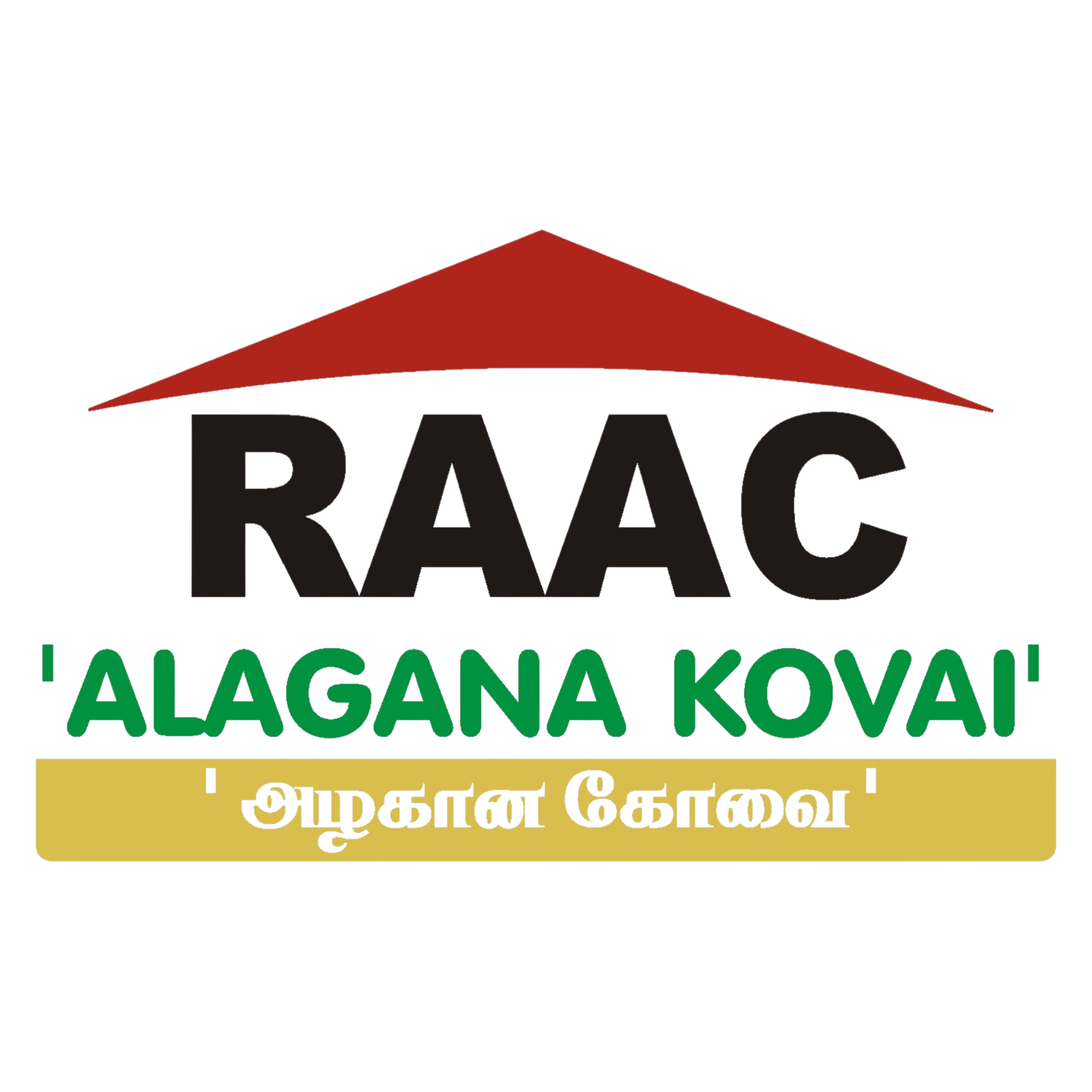RAAC - Residents Awareness Association of Coimbatore
Let’s create a peaceful, healthy living environment together!
The encroachments in and on the banks of River Noyyal, Ponds and Canals to be removed. All Water bodies must be desilted, and sewage flow must be prevented.
Identifying the Noyyal Streams & Mapping
River Noyyal was once a perennial river with 34 live streams feeding the river. At present only 4 streams – Nandangarai, Masa Orambu, Mundanthurai, Iruttupallam are still connected with river Noyyal. And all other streams/ channels are either encroached or used for agricultural purposes or silted up and have become cart tracks. In order to assess the exact volume of water flow during the rainy seasons, a Topographical Survey and Revenue Survey has to be carried out, for identifying, studying and mapping of the streams connecting to River Noyyal.
District Administration has to be requested to remove the encroachments after the survey is carried out and rejuvenation of all the streams has to be done if the River Noyyal has to be restored.
During the year 2004-2005, it was estimated that about 600 RWHS are required for the area of 105 sq kms of Coimbatore City. So far 365 nos of Rain Water Harvesting Structures have been constructed in and around Coimbatore from the period of 2004 to 2011 for harvesting rain water stagnating on roads and open spaces of the city.
Now the city has expanded to 255 sq kms area for which more than 2000 RWHs are needed. Construction of such structures will harvest all the rain water stagnating on the roads and in open spaces and causing traffic congestion during the rainy season. Periodical cleaning of the RWHs is very essential if they have to be effectively functional.
Noyyal River Basin has 23 Anicuts, and 31 Tanks. 9 tanks are located within the city limits. These tanks are highly polluted due to the letting of sewage water into them. As a result, the groundwater has become heavily contaminated.
Since desilting has not taken place for many decades in these tanks, the storage capacity of the tanks has diminished significantly. Hence immediate action has to be taken for rejuvenating the tanks and preventing inflow of domestic and industrial effluents into them. All the water bodies located in the city will have to be protected with compound walls after eviction of encroachments and effective measures to be taken for preventing pollutants from entering the tanks.
Prolific growth of water hyacinth due to the presence of sewage in the water also consumes whatever little rain water that gets collected in the tanks.
- SEWAGE TREATMENT PLANT at PERIYAKULAM
- Tree planting on the Bund and the 4 islands that have been created inside the tank.
- Removal of encroachments at Periyakulam- Ukkadam Corner.
- Walkers’ path and cycle track all along the 6 kms of the tank boundary (eateries and hawkers should be totally prohibited)
- Mapping, identifying and desilting of all the 32 channels of River Noyyal right from Sadivayal to Coimbatore.
- Kurichikulam desilting and bund formation with a walker's path. Since the sewage inflow into this tank is relatively less, a low cost decentralised water treatment system (DEWATS) can be considered.
- Removal of Water Hyacinth from all the tanks on a regular basis. TN Govt has announced systematic removal of the weed from all the tanks of the State through the deployment of machinery. We request that it be started from Coimbatore since we already have experience doing it.
- Ban on letting of dyeing unit effluents into Noyyal at Selvapuram since this has a hazardous impact on the city’s groundwater quality.
- More Rain Water Harvesting structures to be constructed within the city to harvest the runoff water from the road sides and open spaces. Huge quantities of rainwater can be saved by the such structures.
- Valankulam removal of encroachments/ desilting/ walkers path along the bund.
- Since more than 115 species of birds visit Singanallur tank, with the help of SACON, facilities to be created for bird watching.
- Long term solution to the treatment of sewage generated by the city and use the treated water to be stored in the tanks.




